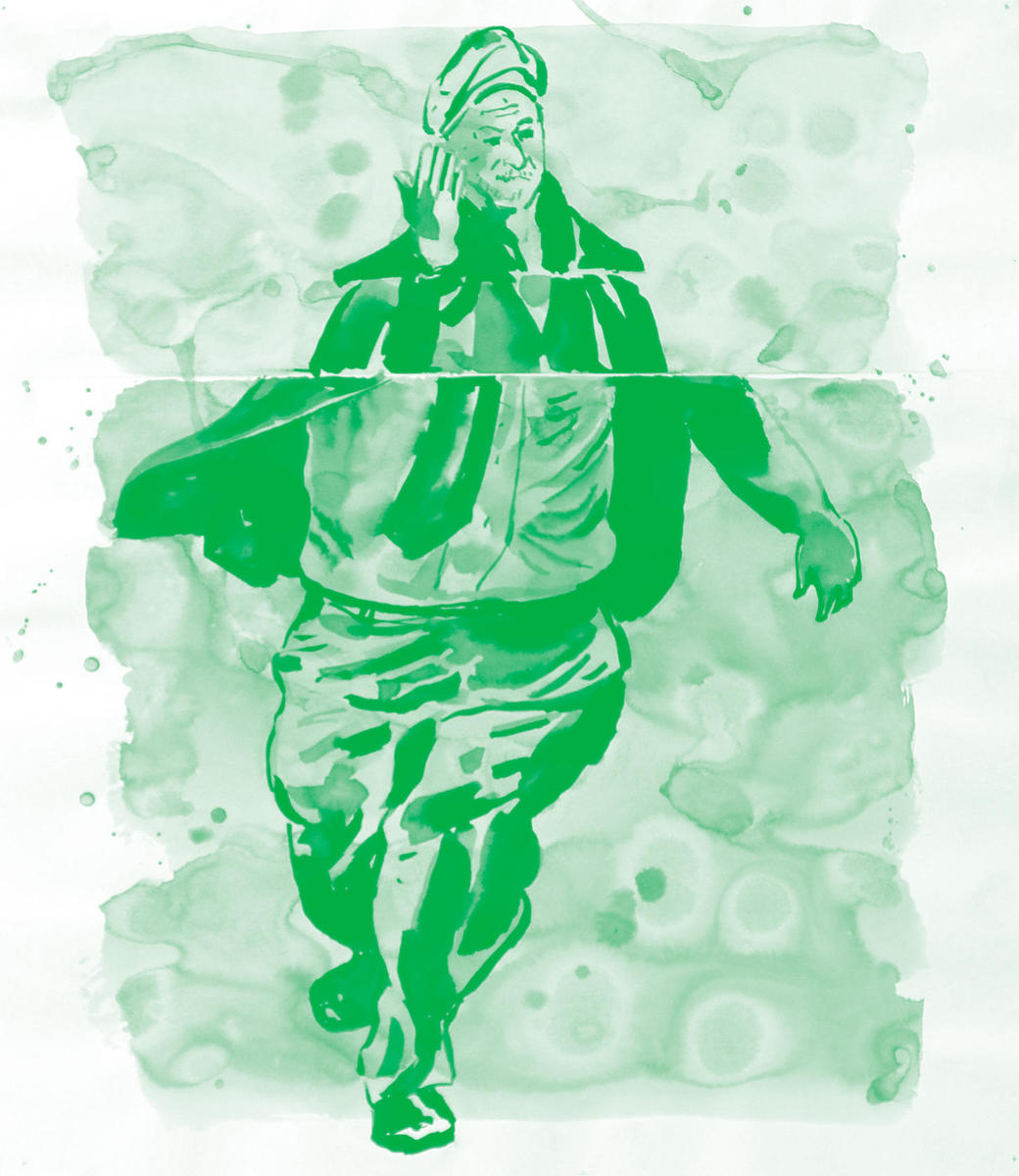
Dubai
Nicky Nodjoumi: Educating the Horse
Gallery Isabelle van den Eynde
December 13, 2010–January 13, 2011
Dour, staid men in business suits are often the protagonists of New York–based artist Nicky Nodjoumi’s large satirical paintings. Though they are more expressionistic than Magritte’s canvases, there is a sense of bureaucratic surrealism transposed onto contemporary global politics. Nodjoumi casts his surrogates, who are sometimes recognizable and often based on photographs in newspapers and magazines, as the captains of politics, industry, and finance in surreal, theatrical tableaus. His paintings serve as absurd allegories of power, or allegories of the absurdity of power. In ‘Educating the Horse,’ an exhibition of recent paintings and drawings at Dubai’s Gallery Isabelle van den Eynde, Nodjoumi engages with the Middle East’s financial hub, where the influence of men in suits is ascendant.
Nodjoumi was an early member of Kanoon, the famed Institute for the Intellectual Development of Children and Young Adults in prerevolutionary Iran, which, starting in the mid-1960s, which produced countless books and films for children. In the lead-up to the 1979 revolution, Nodjoumi collaborated with other artists designing anti-Shah political posters. Aspects of this background in illustration and design are evident in Nodjoumi’s paintings. His figures are rendered in sketchy, monochromatic strokes, in stark contrast with his otherwise vivid palette, and he approximates with oils the matte look of ink or watercolor illustration. The hierarchical arrangement of figures gives his paintings the communicative clarity of successful agitprop.
Nodjoumi’s life-size figures are perched on low horizon lines, against nondescript backgrounds, and painted in wet, hasty, broad strokes — paint dribbles down into figures and sections underneath — focusing our attention on the figures and the relationships between them. Nodjoumi often slices his compositions and figures horizontally, fracturing or refracting the picture plane to create two adjacent, related, but distinct realities, which are distinguished by a slight misalignment or the use of a different color or pattern. This modest formal device recreates the collage process Nodjoumi uses to plan his compositions and subtly registers displacement and difference. It also dismembers the body, implying (without representing) violence; amputated limbs and disintegrating bodies are playfully rendered in colorful dots, which float like flakes of confetti, the interlocking diamonds of Picasso’s famous harlequins, gauzy nets, or bandages.
Stern, stout mullahs and nudes draped in chadors also regularly feature in Nodjoumi’s paintings. These Iranian foils for men in suits were conspicuously absent from ‘Educating the Horse,’ perhaps in deference to local sensibilities. But their omission was not limiting. In fact, Nodjoumi’s suited men benefited from not being cast in strict opposition to stereotypes strongly associated with the Middle East; they became not just Western, but universal signifiers for political and corporate functionaries.
Nodjoumi conjures up whimsically absurd scenarios for these global power players. An astute student of body language, he subtly infantilizes the men, amplifying the ludic resonances of “power player” by presenting them as overgrown boys fighting and playing games. In Educating the Horse (2010) the titular equine hangs in a large net between two suited men. The man on the right has a deep blue head and shoulders and a brown body; he holds a stick in his left hand, ostensibly for disciplining the trapped animal. The man on the left is doubled over, knees bent, head turned upwards, as if this unconventional perspective might afford a unique insight into the animal being examined. But his cohort’s hunched shoulders, and the blank look directed at the cowering man on the left — a stance resembling that of a child who has just done something he knows is wrong but is unrepentant — suggest a more sinister reading: his colleague is keeled over in pain after being unexpectedly jabbed in the stomach. Similarly, The Personal Confession (2010) shows a larger-than-life man seated frontally and looking straight ahead while playing a game of cat’s cradle, strings going back and forth between his outstretched arms. Painted in a dark pink and partially hidden behind a translucent layer of grey paint, his tiny head sits atop a comically thickened, elongated, and segmented body.
In other works Nodjoumi literally entangles the men — stand-ins for the omnipotent but invisible puppet masters who call the shots — in webs of strings. In the masterful Push and Pull (2008) Nodjoumi achieves a startling balance of dark and light tones. Two men, bisected at mid-thigh by a horizontal line, engage in an elaborate tug of war, manipulating strings that control not only their own but their opponent’s displaced lower limbs. They try to stabilize themselves while tripping up their adversaries, a precarious dance that poignantly visualizes the gymnastics of political or corporate negotiation.
Though a resolutely political painter, Nodjoumi steers clear of representing politics. Instead his scenarios dramatize the invisible relationships, connections, and behaviors through which power is expressed, maintained, and circulated. He reveals the machinations of politics for what they truly are, games played by the powerful, often without a clear sense of the real consequences of their actions.